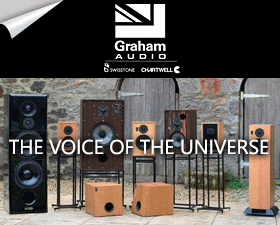There are electrostatic speakers that go far beyond Quads and deliver everything mentioned as lacking with the exception of extreme bass slam. Sound Lab Electrostatic speakers deliver in spades and are a bargain too. Unfortunately, the company does no advertising, almost no marketing, attends very few shows, and has an extremely small dealer network. They are never found in B&M stores, and thus are almost unknown among all but the few very knowledgeable audiophiles. Those who have experienced them usually are believers, but are held back by their size. The new smaller sized Majestic 545PX has a MSRP of $13,436; the top of the line Ultimate 745PX is $45,250. IMHO, this makes them extremely inexpensive and a true bargain compared to the $50-250K (and more) traditional box speakers.
They can play extremely loud (110dB+) and also deliver full bodied accurate sound at very low levels. Mid range dynamics are excellent. Because they are capable of energizing all the air in a room, there is no fall-off in tonality across the spectrum when listening off axis. Imaging is still the best in the 'sweet seat', but you can sit well off to the side and still feel the palpable presence of individual instruments. For the lover of Classical, Opera, Jazz, Folk, and even C&W (I'm a Willie fan) they are a delight. I attend live performances in SF of the 1st 3 genres regularly, and actually often prefer to enjoy them at home. If R&R is your passion and you need extreme bass slam, you could add a subwoofer. Nonetheless, they are full range (24hz-ultrasonics) from one driver, and thus have total coherence. The new "Bass-Boost" technology has added greatly (6dB) to the lower end.
I have the older U-1PX panels at my country home, and soon will have the new Majestic 545PX's available for audition in San Francisco. If any WB member would like to come hear them, you would be quite welcome. Send me a PM.
















